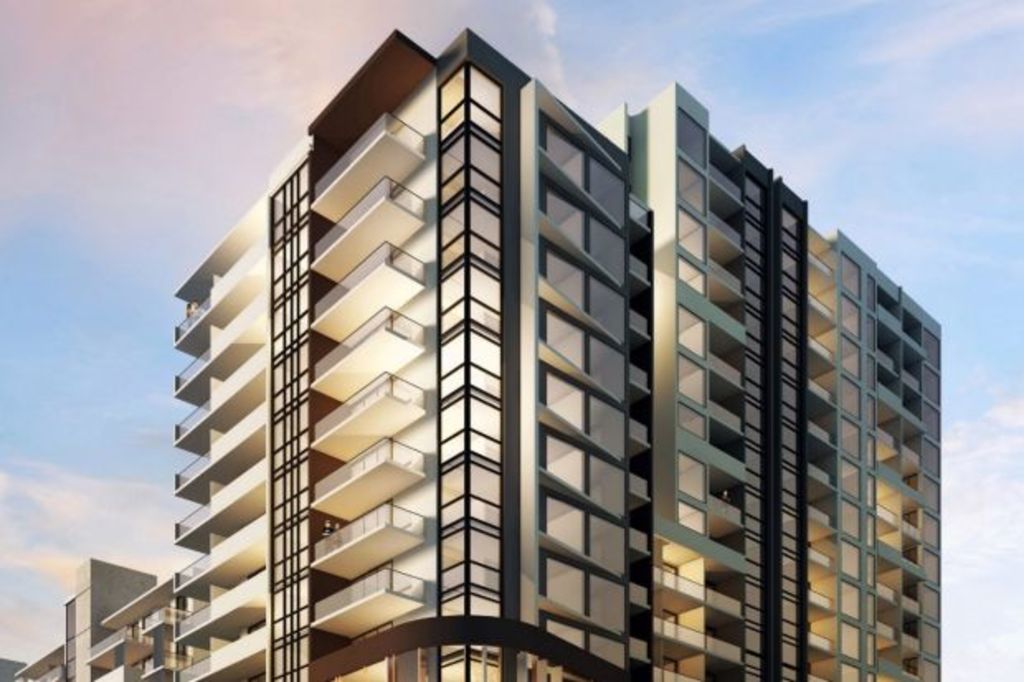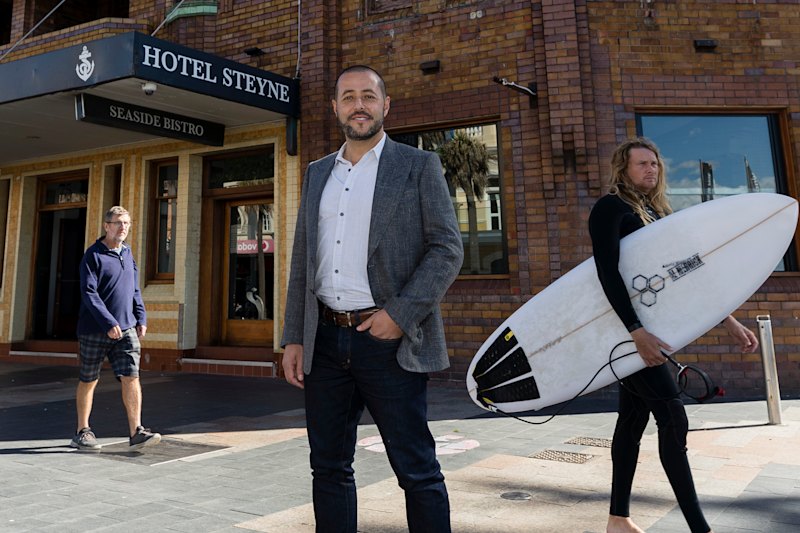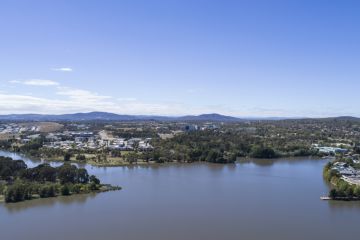Hurstville conservation area residents 'outraged' by tower plans

One of Sydney’s most treasured conservation areas is now fighting for its life, many of its residents claim.
And if they fail in their battle to stop developers pushing for permission to erect two towers overlooking it like the “Death Star” on the area’s highest slope, then they say no other heritage conservation area in NSW will be safe.
“The community is absolutely outraged,” says Sharon Raco, who’s lived on the O’Brien’s Estate in Hurstville, an early 1920s subdivision associated with some of the leading families in the history of south Sydney, for 21 years. “These towers will dominate the estate, and throw some of it into shadow, depriving it of sunlight.
The estate is known for its carefully preserved inter-war single and double-storey houses.
“This is such an important part of our history, and needs to be looked after,” says Ms Raco.
“We realise the need for more homes in Sydney, but we already have 2,000 units being built on the other side of the station. We don’t need more, particularly when these are aimed at investors, and especially when it’s going to destroy the area’s heritage.”
Residents have already succeeded in persuading the Sydney East Joint Regional Planning Panel (JRPP) to defer permission once for the development plans and to cut the height of one of the towers, but the case returns before them on Wednesday.
The application is to build a $20 million development of 381 apartments across a complex on the other side of the road from the heritage area with one tower of up to 16 storeys, and the other of 12.
Papers from the local Kogarah Council show that developer Deicorp offered to pay the council $12,500 per unit for permission to break the current city plan limit on building heights of 39 metres, to be allowed to build to 60 metres, and to nearly double the floor-space ratio from the permitted 3:1 to 5.5:1. In return, under a Voluntary Planning Agreement, the company also promised to give the council a car park and a ‘community facility’ in return for getting the go-ahead.
Despite the application now being with the JRPP, developer Deicorp has already started marketing units in ‘Grand H’ at 12–22 Woniora Road, next to Hurstville train station. A salesman from the sales agency HOME789, which advertises itself as being investor-focused, said, “We’ve already had a lot of calls from people putting down deposits.”
On Monday, a spokesperson for the company said that Deicorp was an award-winning builder and developer which prides itself on being a community-based company.
“Over the past 18 months, we have been working with council and the design review panel and taking on board comments from all the stakeholders in order to achieve the right outcome for 12-22 Woniora Road Hurstville, the council, and the community,” she said.
“We strongly believe the amended plans that have been resubmitted back to council, following the JRPP meeting last month, achieves the right outcome for all parties.”
Deicorp is currently in the NSW Supreme Court over alleged defects in its landmark Star Printery apartments in Erskineville, which the company argues have been caused by a lack of maintenance by the apartment residents. It’s also facing worries expressed by some in the Aboriginal community in Redfern over its redevelopment of the trouble-plagued The Block.
Company owner and director Fouad Deiri was recently named in the Panama Papers. He has denied knowing anything about having a company in the tax haven, the British Virgin Islands, and says he may be a victim of fraud.
Kogarah MP Chris Minns says he has never seen a community so united in its opposition. “I’ve never seen a community group like this before,” he says.
Local councillor Kathryn Landsberry was the only one to vote against the development and says she was concerned about it from the get-go. “One of my concerns was that, by entering into a Voluntary Planning Agreement, we gave the applicant the green light to increase the scale of the development.
“This scale is just not appropriate for the location. They say they’ll provide a community space as part of the price of getting this through but if they were actually serious about providing community benefit, this building would be very different and not in such an already very congested space. This is going to sit on an already high location in Hurstville looming over us all like the Death Star.”
The chief executive of developer lobby group Urban Taskforce, Chris Johnson, says when it comes to building near conservation areas, high-density development needs to be staggered.
“If there are conservation areas with one- and two-storey housing, then there needs to be a gradual step up, to maybe four floors, then eight and so on until you have higher buildings,” he says.
“The general principle is that heritage areas shouldn’t be unreasonably stepped up.”
Residents are also outraged that the ‘Historical Overview’ prepared in assessing the development only focussed on the development site itself – the former home of the Tax Office – and not on the neighbouring heritage conservation area. While they claim the result of so many more people living in that spot will create “traffic chaos”, the traffic impact report carried out contains a sentence about traffic in Gosford, possibly from a cut-and-paste error.
Chris Skiladellis has lived on the O’Brien’s Estate for more than 30 years and says the residents are subject to extremely tight conditions about what they must do to preserve the heritage of their area, but this development will destroy its character in one fell swoop.
“We understand a need for development, but it has got to be sympathetic with the adjoining low density area,” he says. “Put development along the railway lines in areas with other high density or industrial land where it’s much more appropriate.
“The biggest concern is that this will now create a precedent for every heritage conservation area in the country.”
Fellow resident Ann Selle, who’s lived there for 35 years, agrees. “If you have a local plan that has agreed certain height limits and floor-space ratios, how can councils then accept money to allow developers to flout them?
“This is a conservation area. We have to look after it for the future, otherwise we’ll soon lose all our history, and have none left.”
The O’Brien’s Estate Heritage Conservation Area is also known as ‘The Dress Circle Estate’ for its early inter-war period subdivision comprising substantial, well designed bungalows set in generous gardens on the highest slopes of Hurstville, and has been described as ‘increasingly rare’ by the Heritage Council of NSW.
We recommend
We thought you might like
States
Capital Cities
Capital Cities - Rentals
Popular Areas
Allhomes
More







